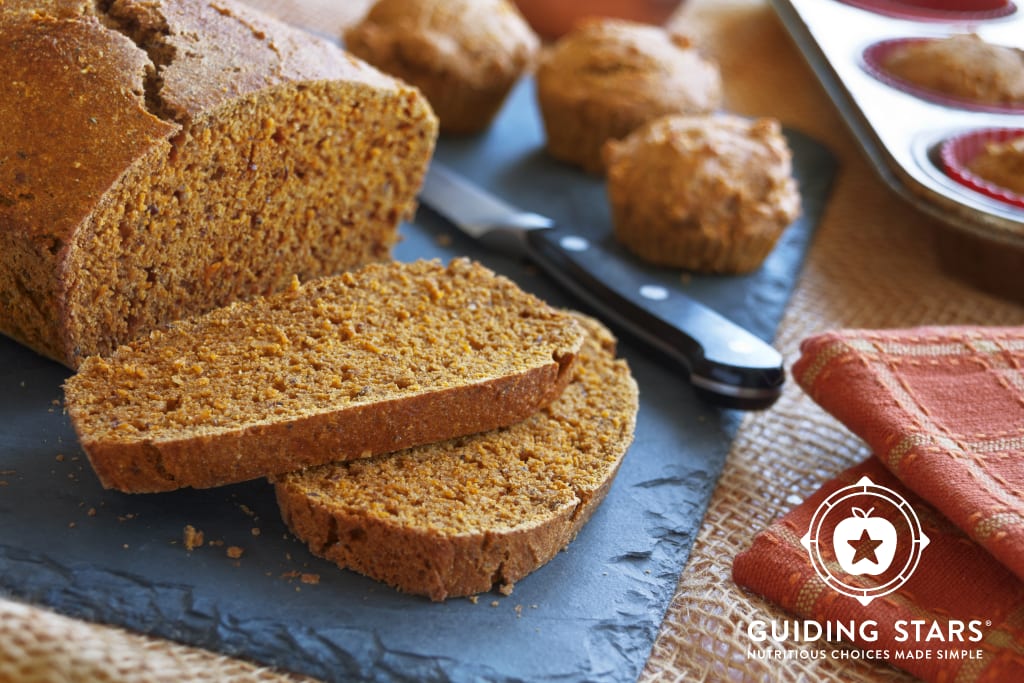
With autumn in full swing, the desire to “snuggle in” and get comfy in our homes becomes stronger. One of my favorite ways to do this is by baking! There’s just something about the aromas of cinnamon, ginger and cloves that signals “it’s fall”. The good news is there’s no need to avoid your favorite fall baked goods to maintain a healthy diet. Consider these three ideas for boosting the health benefits of those goodies.
Add some roots
Before you throw your handpicked apples at me, hear me out on this one! Many root vegetables can be used in baked goods, adding not just nutrients and fiber, but amazing seasonal tastes, too. Try these ideas:
- Beets: I adore beets, but realize they can be a “stretch” for lots of folks. One way to get their nutritional benefits of beets is to use them in baking. Beets plus chocolate is a popular combination for cakes and, trust me, you don’t taste the beets. Give our Chocolate Beet Cupcakes a try — it’s a simple recipe that works with either fresh or canned beets.
- Sweet potatoes: Sweet potato pie gets all the press, but try swapping sweet potatoes for pumpkin in most any baked good recipe. One of our favorite ways to use sweet potatoes is in Sweet Potato Whole Grain Pancakes. So good and easy, and perfect for leftovers. Also try our Sweet Potato Cookies — they earn two Guiding Stars!
- Carrots: Carrot cake is popular, but there’s much more options to consider. Turn that cake into healthy muffins sweetened with apple butter and date paste — that’s our seasonal Carrot Cake Muffins. Or, for a sugar-free carrot cake-like bread that’s suitable for breakfast, check out this Carrot Bread.
Boost the fiber
Luckily, fall baking recipes go well with heartier grains, making added-fiber versions of your favorites easy to pull off. Adding fiber to baked goods sometimes changes the moisture measurements, but it really depends on the amount of fiber. For quick background on what the term “whole grain” means, check out this post from my colleague, Allison. And if you’re ready to get going, here are a few tips:
- Simply swapping white whole-wheat flour for regular whole-wheat flour requires no changes to the recipe. This substitution results in a lighter color and slightly sweeter taste in the finished product. However, you can also replace regular all-purpose white flour with white whole-wheat flour. In this case, you’ll get the best texture and flavor results if you only replace 25-50% of the total flour amount (and keep the rest as all-purpose). Give it a try and see how it turns out and tastes in your recipe. This technique works well in recipes for quick breads and cookies, less so for lighter-baked goods, like cakes. You’ll find great white whole-wheat flour recipes in the Guiding Stars collection, including this Pumped-Up Pumpkin Bread. Another option is to combine whole-wheat flour with cake flour. Take a look at this Guiding Stars recipe for Soft Whole-Wheat Dinner Rolls (bonus ingredient, wheat germ). And when a more tender crumb is desired, as in a coffee cake, experiment with whole-wheat pastry flour.
- Try adding ground flaxseed to your quick breads and cookies. It contributes plant-based omega-3 fatty acids, protein and fiber, as well as several other vitamins and minerals. In quick breads or muffins, I typically sub in ground flaxseed for ¼ cup of the flour. And I don’t make any other substitutions in the recipe. Give this tasty recipe a try: Lemon Blueberry Flax Muffins — it contains whole-wheat flour and ground flax. You can also search for recipes that call for ground (sometimes called “milled” flaxseed) and skip the experiments. Fun fact: Ground flaxseed can also replace eggs in baked goods, as can ground chia seeds. To replace one egg, combine 1 Tablespoon ground flaxseed or ground chia seeds with 3 Tablespoons of water. Let it sit for about 15 minutes. Double this formula to make two eggs.
- Try adding high-fiber cereal to the crumb topping mixture on fruit crisps (I’ve also subbed in granola for the topping and it worked fine)! This also works for the crumb topping on pies.
Get seedy
Seeds are highly nutritious. This makes sense when you think about it, since a seed’s purpose is to nourish a new plant. Seeds add fiber, healthy fats, and a variety of minerals (like magnesium, iron, phosphorus and calcium) to whatever you’re baking. Typically, seeds are added to baked goods in small amounts, and often as a topping for bread or muffins. Seeds also shine in all kinds of granola bars, energy bars, and snack bars. Here at Guiding Stars, we are big fans of seeds and incorporate them into baked goods recipes whenever we can. Try these Soft Pumpkin Bars and no-bake treats like our Seed-Date Bars!